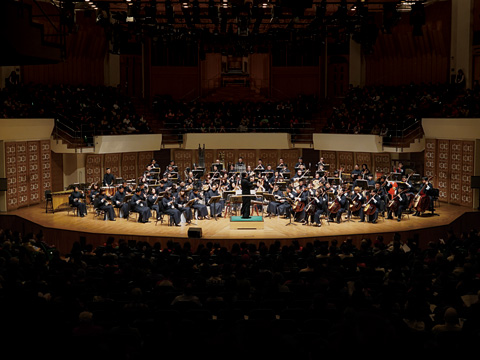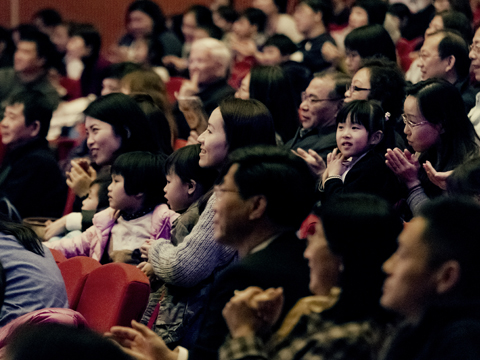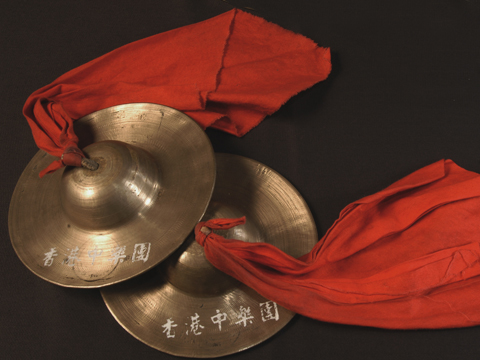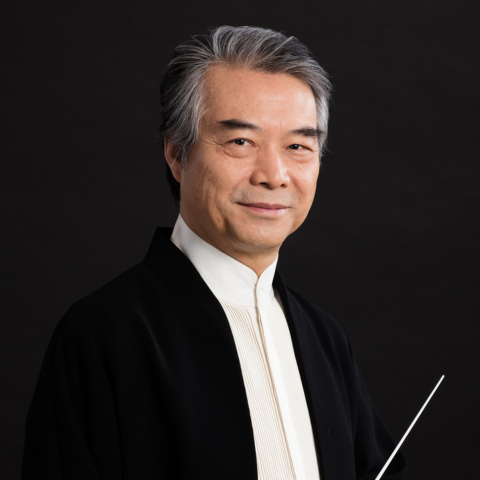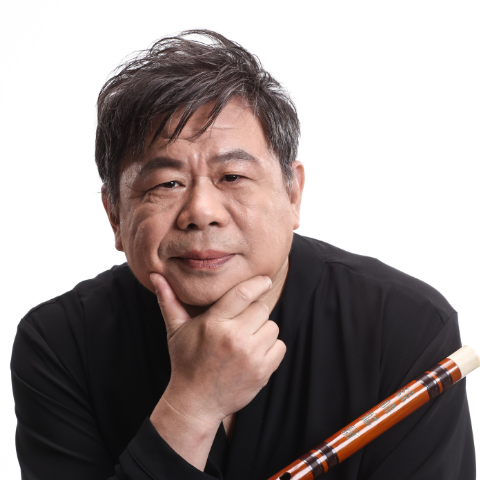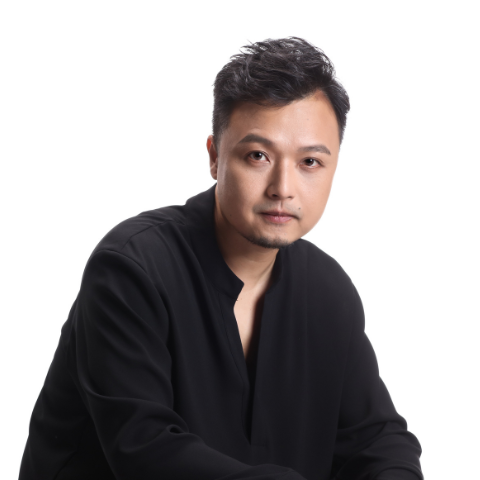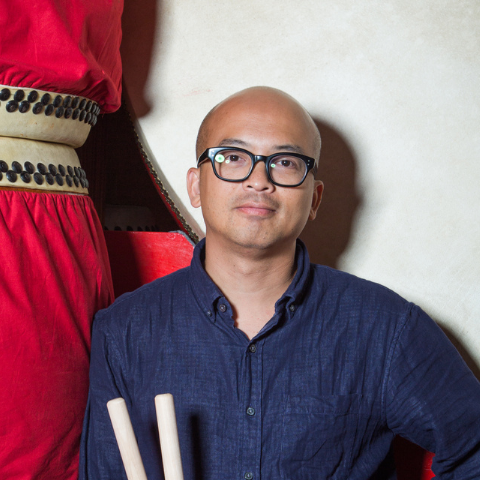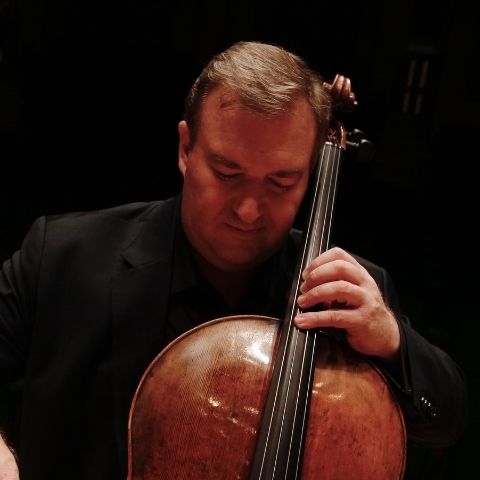
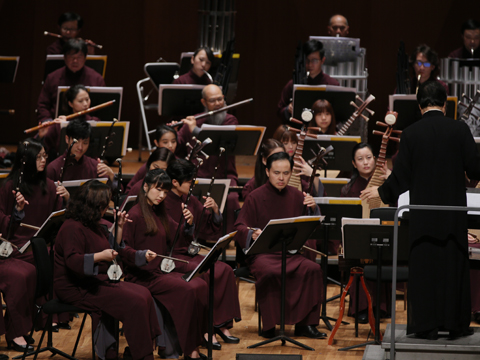
HKCO
Hong Kong Chinese Orchestra Orchestra Members Artistic Director and Principal Conductor for Life Council Advisors & Artistic Advisors Council Members Management Team Vacancy Contact Us (Tel: 3185 1600)

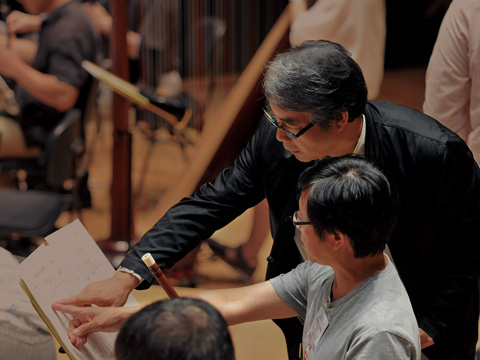
What's On

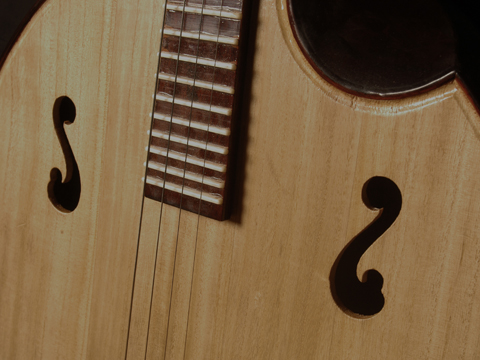
Education
The HKCO Orchestral Academy Hong Kong Youth Zheng Ensemble Hong Kong Young Chinese Orchestra Music Courses Chinese Music Conducting 賽馬會中國音樂教育及推廣計劃 Chinese Music Talent Training Scheme HKJC Chinese Music 360 The International Drum Graded Exam

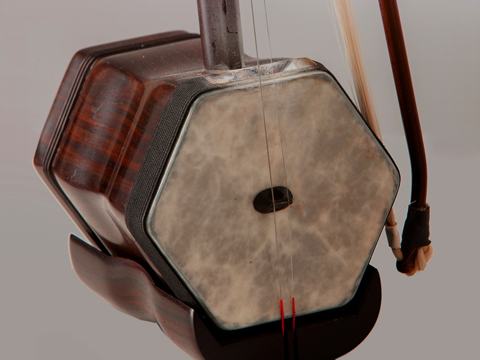
Instrument R&D
Eco-Huqins Chinese Instruments Standard Orchestra Instrument Range Chart and Page Format of the Full Score Configuration of the Orchestra
44th Orchestral Season
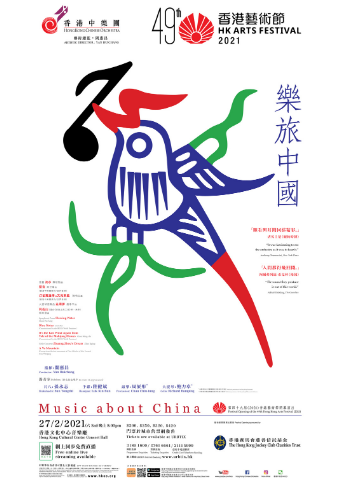
Music About China - Festival Opening of the 49th Hong Kong Arts Festival (2021)
(Free Online Live Streaming)
Handpan: Luk Kin Bun
Percussion: Chau Chin-tung
Cello: Richard Bamping
(In order of appearance)
The Hong Kong Chinese Orchestra has always been committed to promoting the Chinese music while breaking new ground for the genre. Its high quality performance has been recognized in the international music arena. It has also been a driving force behind the creation of new works, with a commissioned repertoire of over 2,400 works, new compositions and arrangements included. The ‘Music about China’ series, jointly launched by the HKCO and the Hong Kong Arts Festival in 2007, has premiered a considerable number of works by composers from Greater China and beyond, thus promoting Chinese culture and perpetuating the heritage of Chinese music. As the series enters its 15th year, it has been designated as the opening programme of the Hong Kong Arts Festival 2021.
The upcoming concert features a spectrum of highly imaginative music, such as Chan Ming-chi’s new original composition, It’s the East Wind Again from Tale of the Mahjong Heroes. By using alternative musical instruments, Chan captures vividly the many reactions of the players in the game. Blue Notes by Golden Horse Award winner Leon Ko is an ingenious hybrid of the Cantonese nanyin and American blues. It carries the folksy yet graceful sounds of Chinese traditional music as well as the worldly-wise sensibilities of the life of common folks. The cello concerto Zhuang Zhou’s Dream, a tour de force that took Zhao Jiping ten years to complete and premiered in 2008 by the HKCO and cellist Yo-Yo Ma, is a philosophical dialogue between a cello and a Chinese ensemble. It has been taken on tour to top performing venues such as the Carnegie Hall in New York and the National Centre for the Performing Arts in Beijing. In this Hong Kong revival, it should inspire the audience to explore once again the wisdom of Zhuang Zhou.
Click HERE to register Free Online Live Streaming NOW!

Festival Opening Sponsor:

Read the House Programme Here
Symphonic Poem Flowing Water Chan Pui Fang
Blue Notes Leon Ko (Commissioned by the HKCO / World Premiere)
It’s the East Wind Again from Tale of the Mahjong Heroes Chan Ming-chi (Commissioned by the HKCO / World Premiere)
The first movement: The Strategic Battle for the Winning Tile
Shakuhachi: Sun Yongzhi
The second movement: When Luck Comes in Full Circle
Handpan: Luk Kin Bun
The third movement: For the Myriad Living Things on Earth
Percussion: Chau Chin-tung
The fourth movement: A Symphony of Clattering Tiles
Cello Concerto Zhuang Zhou’s Dream Zhao Jiping
Cello: Richard Bamping
From Philosophy to Music – A Picture in the Mind’s Eye
Chow Fan-fu
‘Music about China’ is a signature concert series of the Hong Kong Chinese Orchestra at the annual Hong Kong Arts Festival, where both orchestra and audience journey across the vast land of China through music, with the programming meticulously prepared to highlight unique features for each edition. The five pieces selected this year are all commissioned by the HKCO, including two new works specially created for the occasion and making their world premieres. The smooth and seamless programme allows the audience to ply the world of music from the ancient Central Plains to contemporary Hong Kong, or from primitive rusticity to modern dynamism. While listening to the music, the audience can not only visualize rich and changing scenes in the mind’s eye, but also imbibe the philosophical meaning behind the melodic notes.
Different traditional Chinese philosophies
The cello concerto Zhuang Zhou’s Dream by Zhao Jiping, as indicated in the title, makes reference to Taoist philosophy as expounded in Zhuang Zhou’s Butterfly Dream from Qiwulun (The Adjustment of Controversies), by the ancient philosopher, Zhuang Zhou (circa 369 - 286 BCE). The dialogue between the cello, an instrument of the West, and the Chinese orchestra in a concerto emulates a scene from the dream – “Was it Zhuang Zhou who became a butterfly in a dream, or was it a butterfly who became Zhuang Zhou in its dream?” The East-West fusion of musical instruments paints a picture of the dream that echoes questions asked in this philosophical rhetoric. And is the Taoist philosophical viewpoint a conundrum, or is it not?
As a foil to the traditional Taoist philosophy of the Chinese, Three Melodies of West Yunnan by Guo Wenjing depicts a scene of the simple and primitive culture of Yunnan ethnic minorities. Only the first movement of this piece, A Va Mountain completed in 1993, is performed in this concert. It depicts the primitive religious activities of the Va ethnic minority who inhabit the mountainous areas. The solemn and rather gloomy ambiance evokes the outlook on life for the people with a primitive faith.
Philosophical outlook on life in a modern metropolis
The music of the three pieces stemming from different traditional Chinese philosophies produces different musical images. But interpolated between them are two world premieres by Hong Kong composers which stand out in sharp contrast with their depiction of the Hong Kong culture, a fusion of East and West.
These two new compositions from Hong Kong are also markedly different. It’s the East Wind Again from Tale of the Mahjong Heroes by Chan Ming-chi has the quintessential Chinese gambling game – mahjong – as its theme. This common recreational activity among Hong Kong people is deeply entrenched in Chinese culture and is rich in everyday wisdoms and insights of life. The image-rich titles of the four movements show vividly through music different local cultures, approaches to and insights of life as seen during the process of the game. It also unravels the myriad mannerisms of the players, culminating in an age-old saying that a game of mahjong is the first and foremost character test for a prospective son-in-law.
This concert begins with Chan Pui Fang’s Flowing Water and ends with Guo Wenjing’s simple tribal interpretations of life in A Va Mountain - now is there a special meaning to such an arrangement, too?
On Mahjong
One legend has it that the Mahjong game was invented by a man called Wan Bingtiao in the early 14th century. He drew inspiration from his favourite Chinese classic The Water Margin to develop the earliest form of the game, with the 108 outlaws in the story engraved on the mahjong tiles. The four cardinal points were added to denote the different directions whence the protagonists hailed, while the three dragons represented the diverse social stations of these heroes ranging from noblemen and officials to ordinary joes.
Although Mahjong pitches the wit and strategy of (usually four) players against one another, the orderly drawing and discarding of tiles accords every player equal opportunity at the game.
The new work featuring Mahjong commissioned by HKCO aims to express the human perceptions of meaning of life and order of time through gaming culture and ancient Chinese philosophy.
The main note in this piece of music is D, reflecting the first letter of Dong, the Chinese character ‘east’ in pinyin used in the title, as well as the frequent dong-dong-dong sound of drums being played. The D note also scaffolds the overall tonal construction of the piece, such as D pentatonic series, D major and minor tones, and Dorian mode.
The goal of Mahjong is to be the first to achieve a legal winning hand, but that requires a high degree of strategy and perseverance. Therefore, in orchestrating this work of music, the movements borrowed different underlying concepts from three principles crucial for success in life and business, namely Bamboo Principle1, Lotus Principle2 and Cicada Principle3, to showcase the characteristic sounds of the different instruments of the Chinese Orchestra.
1 Bamboo Principle: In its first four years, a bamboo seedling only grows by 3cm; but from its fifth year onwards, the plant shoots up at the astounding rate of 30cm a day to reach a height of 15 meters in a matter of six weeks. In those four years, the plant has actually put out an extensive root system covering several hundred square meters. One length of bamboo may have to endure countless cuts to be made into a Chinese flute, dizi. Yet it only takes a single cut to render another length of bamboo into a very humble pole for hanging out laundry to dry. The life lesson here is therefore one needs to build reserves, withstand adversity, endure loneliness, shoulder responsibilities, and accomplish missions in order to succeed.
Your Support
Friends of HKCO
Copyright © 2024 HKCO
